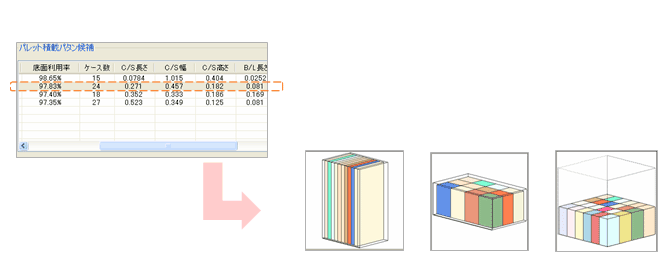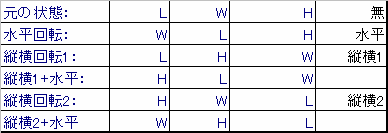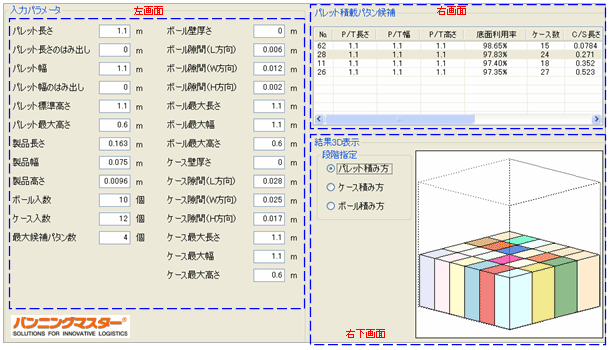Best solution for efficient loading planning! | Optimize your loading plan with our easy to use software!
PalletMasterPlus calculates the most effective way to load items to pallets from when you develop the products.
3 Steps calculation is available with ball, case and pallet, and calculates the best plan for item size.
When you input how many items you can put in balls, cases and size of the items, PalletMasterPlus calculates the most suitable patterns for your balls and cases from what you can choose for your items.
You can check the arrangement of balls, cases and pallets in 3D.


With our multi-loading calculating system, loading simulations are available in 3steps from items – balls – cases – pallets.
Calculations are based on the ratio of balls and cases on bases on a pallet. The results are shown in patterns accordingly with effective use of pallets from which you can choose the best matches of case and ball sizes for your items.

* Input maximum size for ball (length width height)
* Items to balls correspond in one on one (1 block loading)
* The gaps within balls are considered
* Input maximum size for case (length width height)
* Balls to cases correspond in one on one (1 block loading)
* The gaps within cases are considered
* Loading to pallet premises single items loaded on same height
* Does not allow sticking out of the pallets. Parameter's default for sticking out is 0.


* Left: Input sizes for pallet, ball, item
* Right: Patterns are shown. (4 patterns)
* Right-Bottom: 3D check for calculated patterns.

3 Steps calculation is available with ball, case and pallet, and calculates the best plan for item size.
When you input how many items you can put in balls, cases and size of the items, PalletMasterPlus calculates the most suitable patterns for your balls and cases from what you can choose for your items.
You can check the arrangement of balls, cases and pallets in 3D.

With our multi-loading calculating system, loading simulations are available in 3steps from items – balls – cases – pallets.
Calculations are based on the ratio of balls and cases on bases on a pallet. The results are shown in patterns accordingly with effective use of pallets from which you can choose the best matches of case and ball sizes for your items.
* Input maximum size for ball (length width height)
* Items to balls correspond in one on one (1 block loading)
* The gaps within balls are considered
* Input maximum size for case (length width height)
* Balls to cases correspond in one on one (1 block loading)
* The gaps within cases are considered
* Loading to pallet premises single items loaded on same height
* Does not allow sticking out of the pallets. Parameter's default for sticking out is 0.

* Left: Input sizes for pallet, ball, item
* Right: Patterns are shown. (4 patterns)
* Right-Bottom: 3D check for calculated patterns.






